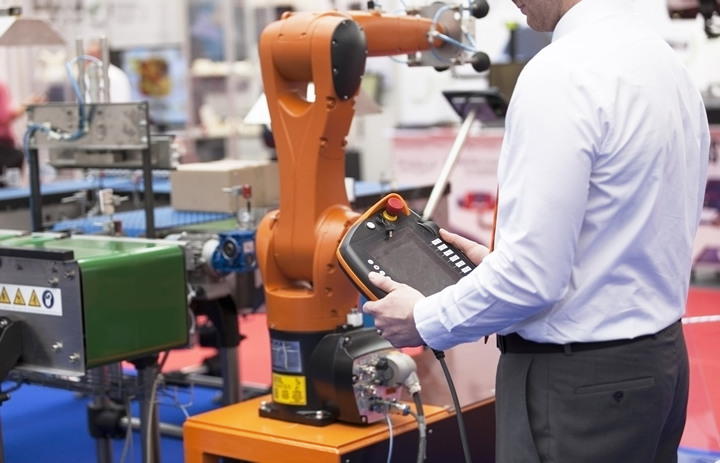Why Manufacturers Must Rebuild Their Factories Around the Buyer

Manufacturing buyers are not who they used to be.
Today’s generation of buyers expects products built to fit their needs, transparent pricing, reliable delivery, and ongoing support that extends beyond the initial sale. They also expect consistent and easily accessible product information to guide their choices.
The consumerization of business technology has empowered these digital natives. Modern professionals are used to smooth, personalized digital experiences in their personal lives. Now, they expect that same level of ease and responsiveness at work. Industrial buyers carry those expectations into every business decision.
For manufacturers of complex equipment, that shift changes everything. Antiquated factories still running on disconnected systems and manual handoffs are struggling to compete.
These changes are also sweeping the global supply chain, where buyers demand the same visibility, speed, and transparency they enjoy as consumers. As such, fulfillment teams must now provide real-time updates, accurate lead times, and seamless collaboration from order to delivery.
The Factory Needs to Evolve
For years, manufacturers of complex products tried to strike a balance between two competing priorities: operational efficiency and customization. They had two choices -- either standardize and scale or tailor and slow down. Today, those trade-offs no longer work as buyers now expect the best of both worlds. They want flexible options that match their specific needs as well as accuracy, speed, and reliability.
To meet those expectations, manufacturers must adopt a new model that unites sales, engineering, production, and service around a single, crucial goal: creating value for the buyer.
Put the Buyer at the Center of the Factory
This new model is the Buyer-Centric Smart Factory, and it’s built on a single source of truth for product and process data. Under this premise, all teams share a common foundation, rather than each department working in isolation. Sales proposals are accurate from the start, engineers spend less time validating orders and more time creating innovative products, while production runs smoothly from accurate inputs. This is a process that feels seamless for the customer across the buying journey.
The focus on the buyer does not stop once the equipment ships. Buyers expect reliability, timely upgrades, and responsive service when problems arise. They can access this level of service when sales, engineering, and service share a unified view of what was built, delivered, and maintained. With that level of transparency, manufacturers can anticipate needs, recommend upgrades, and deliver full-service performance solutions. Accurate forecasting and analytics enable easier planning of materials, scheduling of services, and continuous improvement of reliability. Over time, this greater visibility builds deeper trust with the buyer.
Data Plays A Key Role
Data is at the center of the Buyer-Centric Smart Factory. In complex manufacturing, important information is often trapped in silos – sales tools disconnected from engineering databases, production systems isolated from both. These gaps result in quoting errors, missed deliveries, and shrinking margins. Manufacturers need a single, verified data source to eliminate those gaps. When every team works with the same information, every step of production reflects the buyer’s exact requirements, resulting in predictable and dependable outcomes, all of which buyers appreciate beyond measure.
The use of artificial intelligence and analytics will vastly improve this. AI captures engineering rules and applies them in real time, checking proposals before they reach production. This frees up engineers to focus on product development while keeping deals moving faster. Analytics updates information and provides connection points to sales, production, and service, giving all team members a complete view of operations. Now, teams can forecast, demand, and manage materials, while tracking performance in the field. And they can do all of this while responding in real time to any changes.
Building Buyer Trust
The Buyer-Centric Smart Factory delivers more than operational efficiency. It helps manufacturers deliver on their promises: accurate quotes, reliable delivery, and consistent support, which, in turn, builds buyer trust. This becomes a huge competitive advantage in an industry defined by volatility and price pressures. Buyers who trust their suppliers are more likely to remain loyal.
Supply chains also benefit from this model. Accurate forecasting improves material planning and reduces shortages. Suppliers receive more accurate demand signals, which boost collaboration across the supply chain. This results in a more resilient ecosystem where every team works in alignment to fulfill the buyer promise, helping complex manufacturers enjoy steady growth without constant firefighting.
Moving to a Buyer-Centric Model
Building the buyer-centric model requires a complete transformation of how the business operates, demanding cross-department collaboration, connected systems, and a mindset that puts the buyer experience at the forefront of every decision. It is not a simple process, but one that will reap enormous rewards as the factory evolves from a production site into a system built to deliver value at every stage of the buyer's journey.
The up-and-coming buyers are already choosing manufacturers that not only understand their expectations but are ready to meet them.
Featured Product

